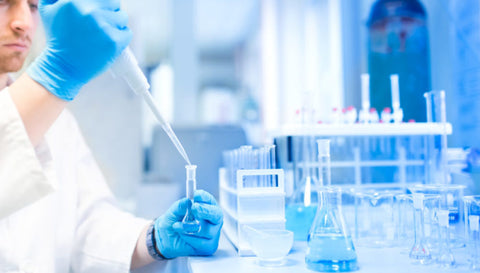Purifying Multi-Subunit Proteins

This blog post is the second in a series that spotlights proteins that have been purified by the CL7/Im7 system. Read both sections of part one about Cas protein purification here and here.
Ultra-high purity is a challenge to achieve using traditional multi-step methods, making proteins’ study by X-ray crystallography incredibly difficult. Certain categories of proteins can be especially difficult to purify. Multi-subunit proteins present roadblocks because of their size and the expression of multiple units. In this blog post, we discuss the one-step purification of ttRNAP and mtRNAP, two bacterial RNA polymerases, using the CL7/Im7 system.
Bacterial RNA polymerases: ttRNAP and mtRNAP
ttRNAP and mtRNAP are the core enzymes of RNA polymerase in T. thermophilus and M. tuberculosis, respectively. mtRNAP is a structural and functional analog to ttRNAP but with distinct surface properties. The two enzymes only share 42% genetic similarity and the charge of mtRNAP is almost double that of ttRNAP (-135 vs. -70). Both have five subunits (ɑ2, β, β’, ⍵) and a molecular weight of about 400 kDa. Multi-subunit RNAPs contain at least 5 DNA/RNA binding domains with non-specific affinity to nucleic acids (NA) and NA-binding cellular proteins. This makes them susceptible to heavy contamination during purification by traditional techniques. Stoichiometric overexpression of each of the subunits from a vector is difficult; β and β’ undergo truncations due to coupled transcription and translation. In prokaryotes, these processes happen concurrently, where the ribosome binds and begins translation while the mRNA is still being synthesized. This functional coupling can lead to incomplete RNA synthesis, for example, if the ribosome blocks the polymerase from pausing or backtracking. An incomplete protein interferes with the enzyme’s activity and affects its purification.
Expression and purification strategy
Previously, no one strategy existed to tackle multi-subunit protein purification. To avoid using distinct 4-5 step chromatographic protocols, TriAltus streamlined the purification process by designing an optimized vector that would work for both ttRNAP and mtRNAP.
The C terminus of the largest β’ subunit was fused to the N terminus of the smallest ω subunit through a flexible linker that is removable by PSC. This lowers the number of co-expressed subunits and the expression of the two subunits is stoichiometrically preserved. The linkage prevents the loss of the ω subunit via dissociation under high salt loading conditions. 
Figure 1. Vector design for multi-subunit protein expression and purification. Modified from Figure 3 of Vassylyev et al, 2017.
A His-tag was added to the second-largest β subunit and a CL7-tag (cleavable by PSC) to the C terminus of the β’ω subunit. N-terminal short PSC cleavable “expression” tags (E1, E2, and E3) were then added to increase the expression levels of all three co-expressed subunits.

Figure 2. A) One-step purification of ttRNAP compared to His-tag purification. B) One-step purification of mtRNAP. Modified from Figures 4 and 5 of Vassylyev et al, 2017.
Using the newly designed vector in conjunction with an Im7 resin column, the ttRNAP was purified with 99% purity and a yield of 37 mg/3 g of cells. This is a stark increase from 65% purity and 15 mg/10 g cells from the His-tag purification. mtRNAP purification also saw an ultra-high purity at 99% and similarly high yield of 29 mg/3 g cells using the vector with the mtRNAP sequence substituted in.
The best purity results were achieved when high salt buffer loading conditions (1-1.2 M NaCl) and pretreatment with DNAse were used for both His and CL7 purification methods.
Conclusion
Through vector optimization, TriAltus was able to create a one-step process for purifying otherwise difficult multi-subunit proteins. 4 or 5 lengthy chromatography steps were distilled into one that preserved stoichiometric co-expression of all subunits for two distinct target proteins ttRNAP and mtRNAP. High yield and ultra-high purity were achieved using CL7/Im7 over His-tag, further solidifying the CL7/Im7 system as a strong alternative method of protein purification for challenging targets.
Read in more detail about how to purify DNA/RNA-binding proteins in the DNA/RNA-binding protein purification protocol.
TriAltus offers Plasmid 1 which is encodes for all three subunits of ttRNAP.
